In Paris, Some of the Coolest New Stuff Is Old
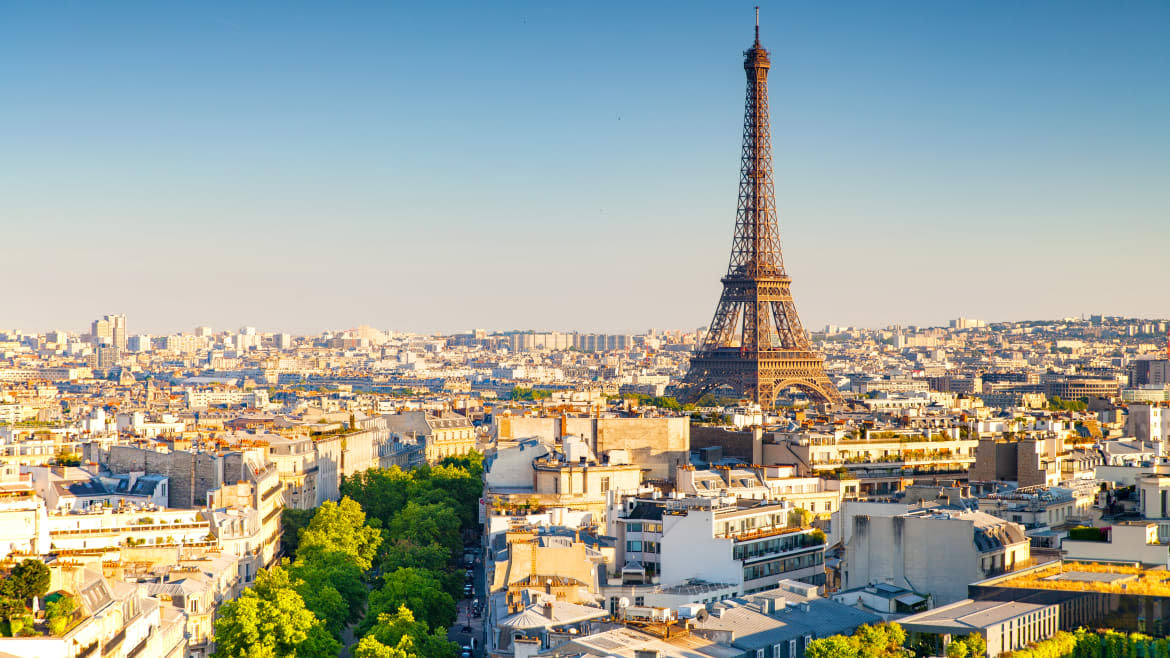
It might have been uttered more than 80 years ago, but the line “We’ll always have Paris” still rings true today. Every year, tens of millions flock to the City of Light to fall in love, to indulge, to shop, to be inspired. They’re convinced that only Paris can offer them the sort of indelible memories like Rick and Ilsa share in Casablanca.
Stripped of its cinematic context, “We’ll always have Paris” could have another meaning. Paris and all its historic beauty, elegant fashion, and next-level cuisine will always be there. “There’s never any need to describe Paris,” the German adventurer Karl Ludig von Pollnitz once said, because “most people know what sort of place it is, even if they have never been there.” Our collective taking it for granted is so powerful it can cause mental illness, and it’s remarkable we do it given Paris’s appeal lies in one of urbanism’s greatest balancing acts between the old and the new. When Americans come to Paris, they expect the city’s core business, fashion, to be all about the new. But the fantasy, the reason we all romanticize this place, is the old. You can buy the latest Dior anywhere in the world, but in Paris you can justify it as part of a long tradition of wastefulness. To put it another way, you can tipsily kiss in the shadows in an Applebee's parking lot, but it won’t be quite the same as one stolen at an ungodly hour in the dim arcades of the Louvre des Antiquaires on the Rue de Rivoli.
That feat of feeding us the new while holding on to the old was very much on my mind during a recent February visit. On the one hand I was there for thoroughly modern reasons. The French airline La Compagnie, the world’s sole business class-only outfit which connects New York and Paris, wanted to showcase their collaborations with cutting-edge star chefs Franco Sampogna and David Toutain. But I was also there because the Musée de Cluny, that dusty, always overlooked repository of medieval curiosities, just reopened after a renovation that has turned it into one of the must-sees of contemporary Paris.
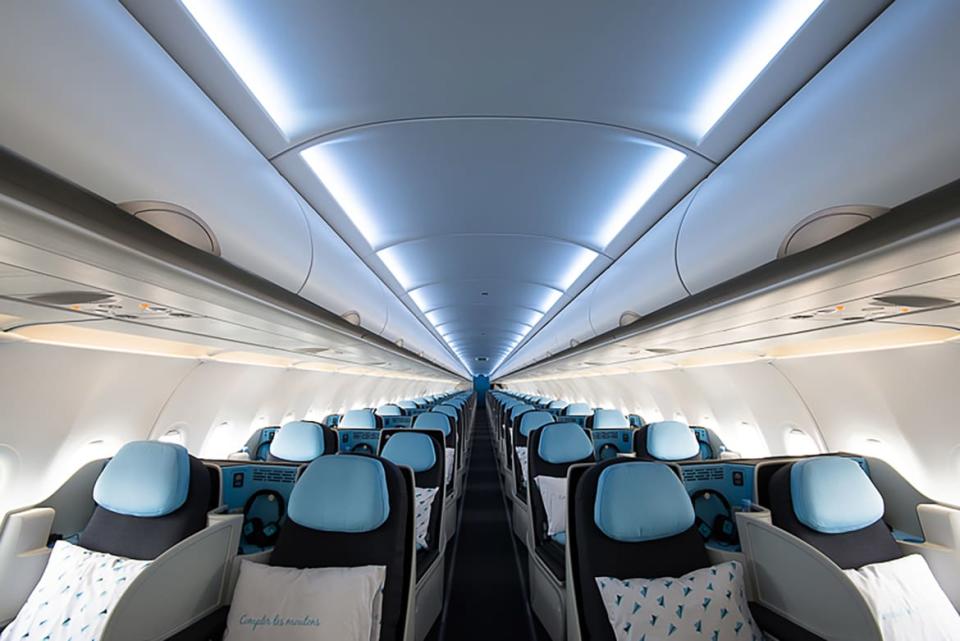
A view of the layout in La Compagnie's plane.
The trip began in something I never knew existed post-COVID–a sleepy Newark Liberty International. La Compagnie was founded a decade ago and flies directly from New York to Paris, Milan, and, seasonally, Nice. It is business class-only, laid out in two-by-twos on new A321 Neos. (This does mean if you plan to go to the restroom a bunch in the middle of the night flight you really want an aisle, otherwise you’re clambering over a sleeping person.) Other than going through TSA, everything about flying the airline was a little surreal. Its concourse, which it shares with Porter Airlines, was virtually empty. You’re still flying commercial, but since there are no economy class passengers, boarding takes just a handful of minutes, and same for deboarding at the less busy Paris Orly airport. The wifi is free and fast. The flight to Europe is more classic French business class fare–potato and leek soup, grilled beef, cheese platter, and an apple brioche pie–with the star chef collaborations on the return.
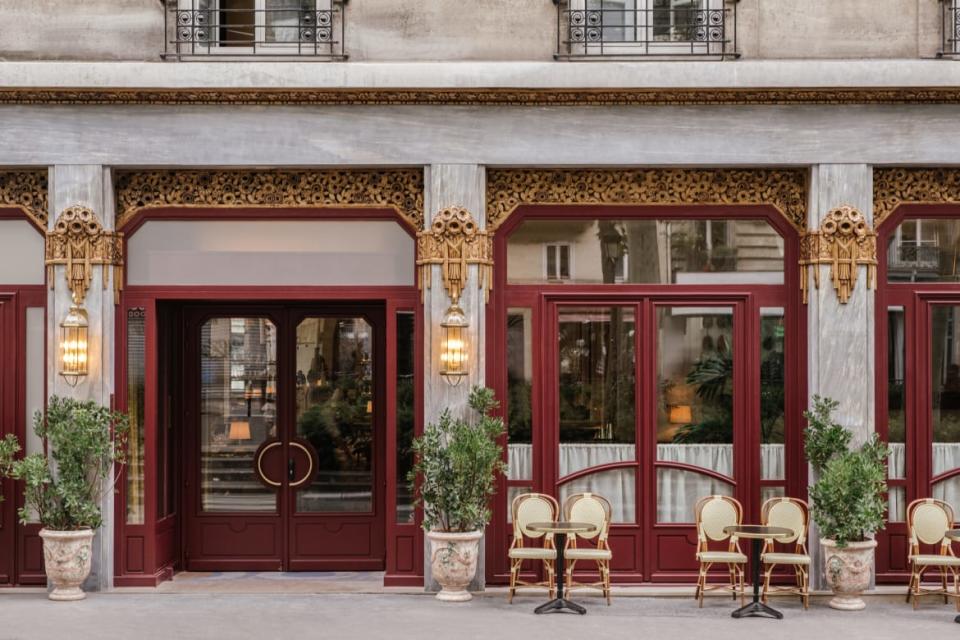
The entrance to Hotel Rochechouart
My home in Paris was the Hotel Rochechouart, which as Ring Lardner would say, is pronounced exactly as it is not spelled. (On my way into the city I was asked for directions by an out-of-town Frenchman and in my stumbling I recalled another Lardner gem: “One of several differences between an American and a Frenchman is that an American tries to understand a Frenchman’s English and a Frenchman tries not to understand an American’s French.”) The hotel today is another great example of the city’s balancing act. It’s a beautiful piece of architecture in Montmartre dating from the height of Art Deco.
Its current owners, the Orso Hotel group, have maintained the details immaculately and so it’s full-blown nostalgia from the elaborate entrance through the restored brasserie and views of Sacre Coeur from its arched windows. But its basement nightclub Mikado is no old-timey jazz club–the striving young set often find their way here on weekends to dance to DJ sets. Plus, the accouterments throughout the property are thoroughly modern and comfort-focused.
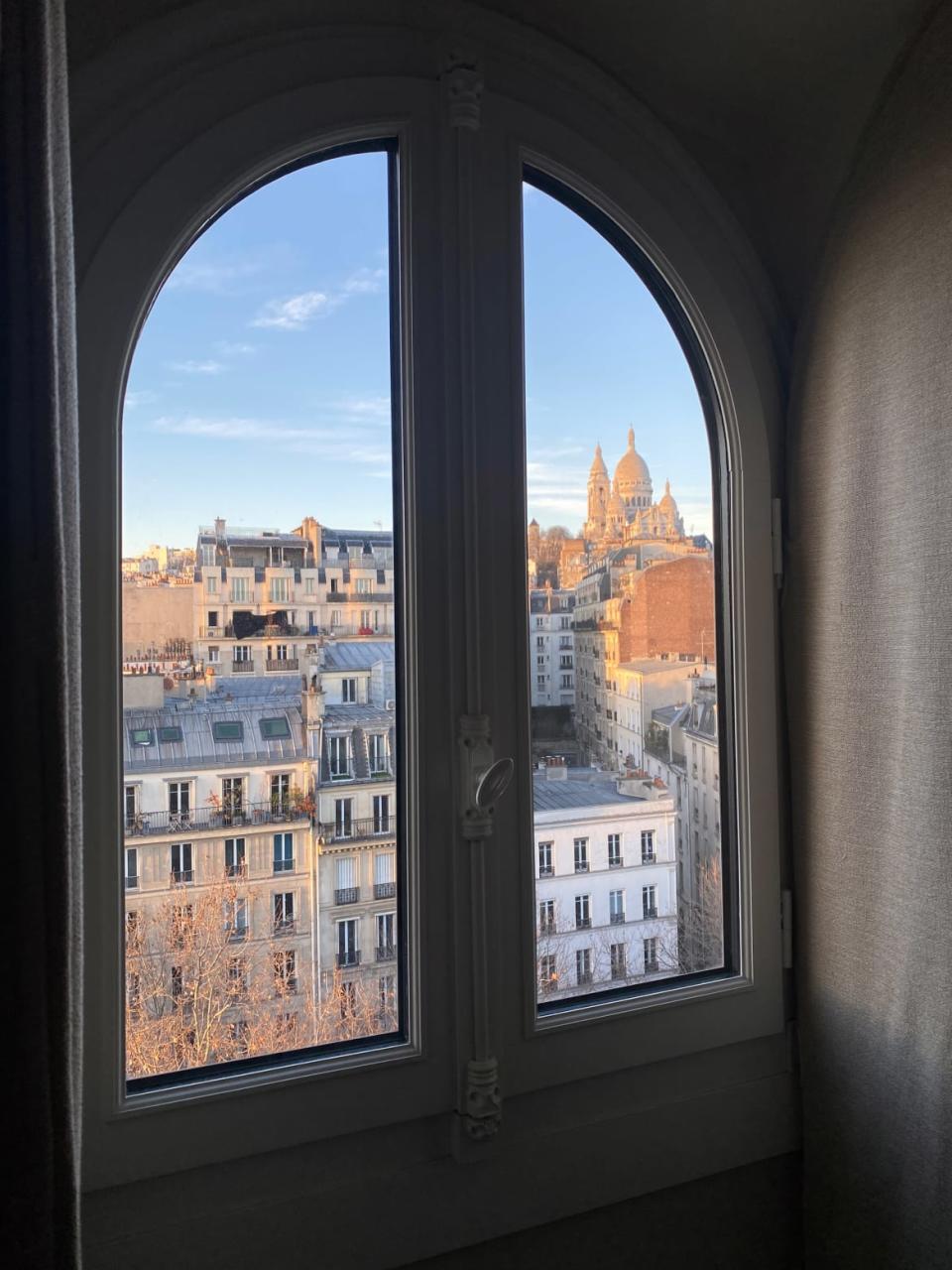
The view from the rooms at Hotel Rochechouart
Montmartre is arguably the most popular neighborhood in Paris today, but for decades that crown belonged to Saint-Germain-des-Prés with its classic spots like Brasserie Lipp, Café de Flore, and Les Deux Magots. But just a few blocks away was a fenced in collection of ruins that few tourists, or residents, ever felt curious enough to poke around in. Those ruins, once a Roman thermal bath, are attached to a 15th century mansion, the combination of which plays host to what is now one of my favorite museums in the whole city, the Musée de Cluny.
The new is so pressing in Paris that it doesn’t take much for something to seem old. Much of this city, including the aforementioned Louvre des Antiquaires, is only from the late 19th century. Sacré-Coeur, a sight whose appeal beyond its siting escapes me, is only from 1875. Much of the “old” stuff—the Pont Neuf, Ile Saint Louis, the Place des Vosges—were once cutting-edge. Indeed, any of the men and women alive at the time of the objects in the Musée de Cluny would have found those “old” bits of Paris as flummoxing as Baudelaire found Haussmann’s Paris or Hemingway would find the the LVMH Foundation or Ando’s Bourse today.
One of the goals of the museum overhaul was to make it more inviting from the street, which architect Bernard Desmoulin accomplished with the new metal-sheathed reception building. The museum has also tossed aside a once-trendy (and misguided) display method based on theme and has switched back to chronological. After popping your head into the still-intact Roman frigidarium, entering the first room sets the tone for what you can expect throughout. Here, Visigothic, Merovingian, and Carolingian pieces that are often stuffed by the dozens into cases in major museums are instead given Mona Lisa-like treatment with in-the-round display cases spread around the room. Marvel—it’s hard not to—at the gold votive Visigothic crowns with sapphire, amethyst, emerald, jasper, and pearl or at the opulent altar frontal from the Basel cathedral.
Then it’s on through the evolution of French religious architecture, and while fun isn’t quite what one imagines finding in a torture device-free medieval museum, the chamber full of disembodied stone heads sure is. It turns out that the kings of Israel and Judah standing watch along the west facade of Notre Dame today aren’t the originals. In the winter of 1793 overzealous revolutionaries climbed up, and thinking the works were actually the kings of France, removed the statues. Fittingly, they chopped off their heads. Those niches would remain empty for 50 years, leaving Notre Dame “toothless.” In the mid-19th century during Notre Dame’s restoration, Viollet-le-Duc recreated the statues based on drawings and other similar works. As R. Howard Bloch recounts in Paris and Her Cathedrals, the head of the king eighth from the left today is of Viollet-le-Duc himself, and the 23rd that of his collaborator Lassus. Cheeky!
As for the heads perched before you in the museum: first they were used as a public urinal and then they disappeared. In 1839 some of the headless bodies were dug up in the 13th arrondissement being used as boundary stones, and then amazingly, in 1977, 21 of the heads were found during an excavation for the Banque Française du Commerce Extérieur and are now here in the museum.
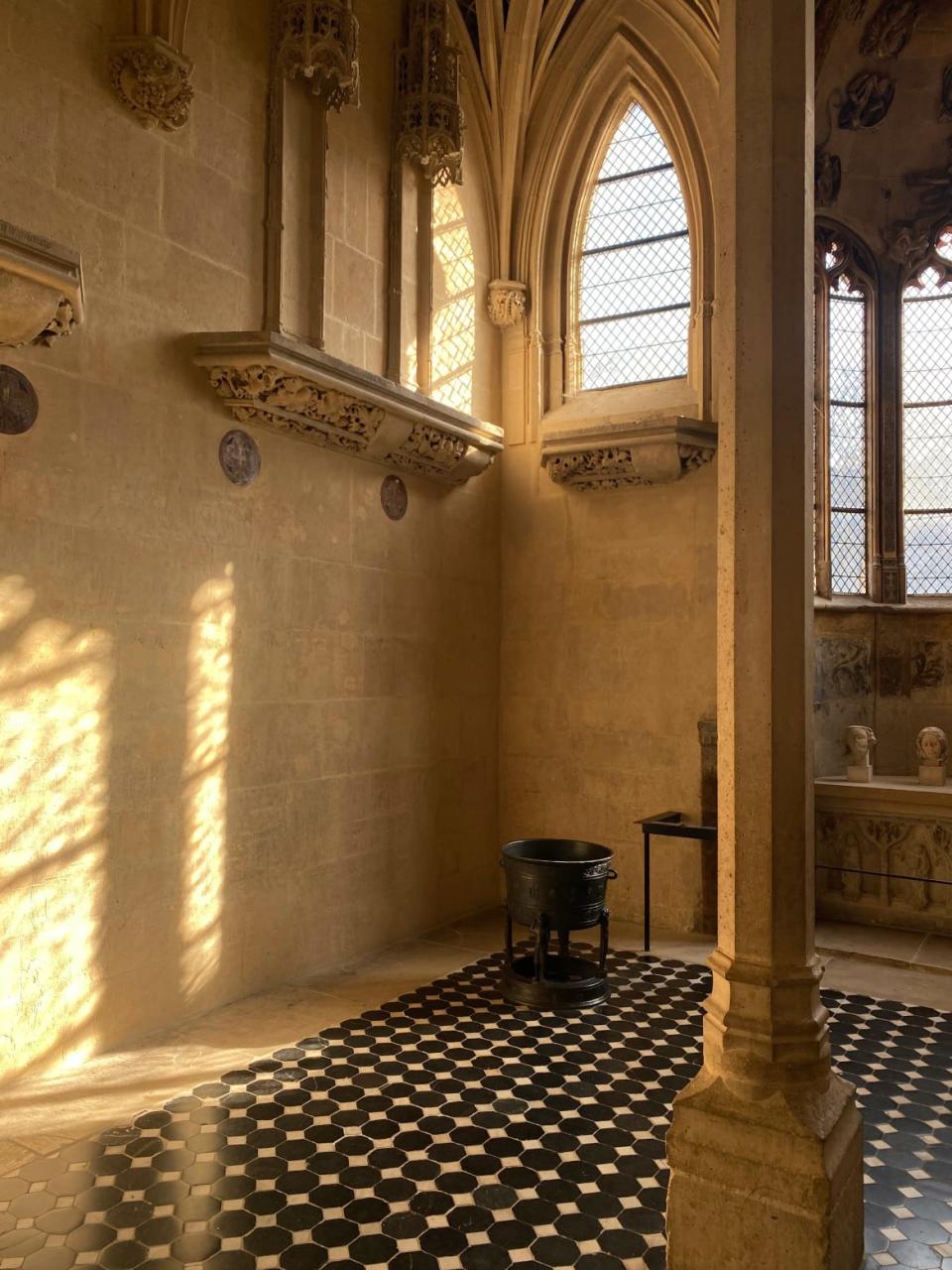
Given the richness of the collection, many paragraphs could be devoted to the stories of each piece, but for now, the highlights will have to do. Inside this museum is the closest you can get to the famed stained glass of Sainte Chapelle–you could almost press your nose against it. More than a century ago, when the glass was restored some of it was deemed too fragile so those pieces were sent here. You can also ogle the oldest existing papal golden rose–just one a year is given by popes to those they wish to reward. Pay close attention to the placards, as they will let you know that those elaborate carved pieces by the Embriachi workshop were made from bone. And the restored chapel from the original building should not be missed. It has been left empty so visitors can appreciate it as a space. With the midday light filtering in, I find it to be one of the most moving places in all of Paris and its single column is elegance made manifest.
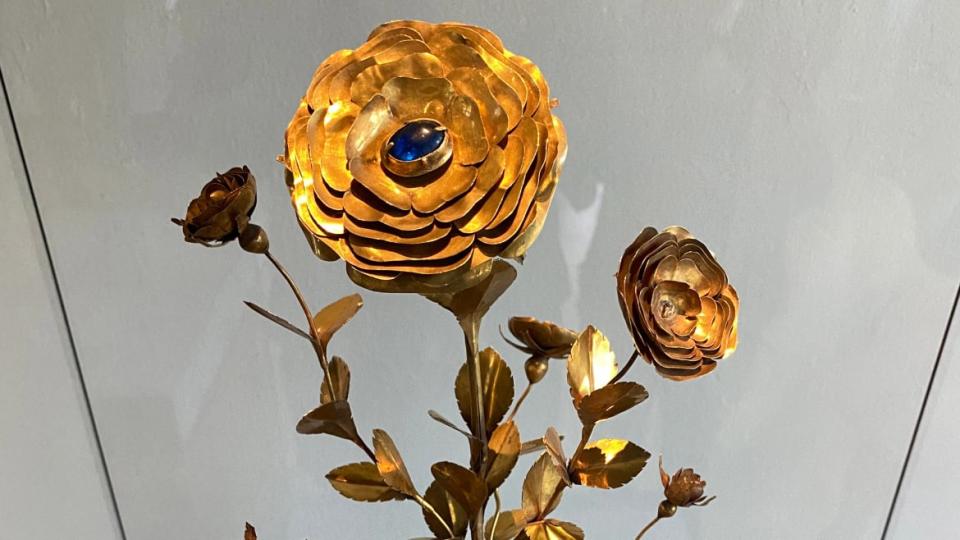
The crown in the collection was something I wasn’t terribly familiar with but haven’t stopped thinking about since. The six tapestries making up The Lady and the Unicorn series have their own darkroom devoted to them. Find a slow day without many visitors, as you’ll want to be able to enjoy these without somebody sighing loudly behind you because they want a photograph. Five of these millefleurs-style soft pink tapestries depict the five senses. The sixth, despite its inscription of “My only desire,” remains a mystery. The colors are rich and radiant, and the expressions of all depicted, animal and human, are delightfully expressive.
That night, my dinner mates were fortunate there was an elaborate tasting menu with lots of moving pieces, because otherwise I wouldn’t have shut up about the museum. We were dining at David Toutain’s eponymous two-Michelin star restaurant as Toutain is one of the chefs collaborating with La Compagnie. There were the usual food “follies” like salsify amongst actual sticks (does anybody accidentally eat a stick?!) but also simple wonders like the lobster with crosne on skewers of Douglas Fir.
Toutain must’ve been reading my mind when he came by the table. It turns out even he was pulling from the old to create the new–the dish of artichoke petals served that night was inspired by his grandmother’s recipe.
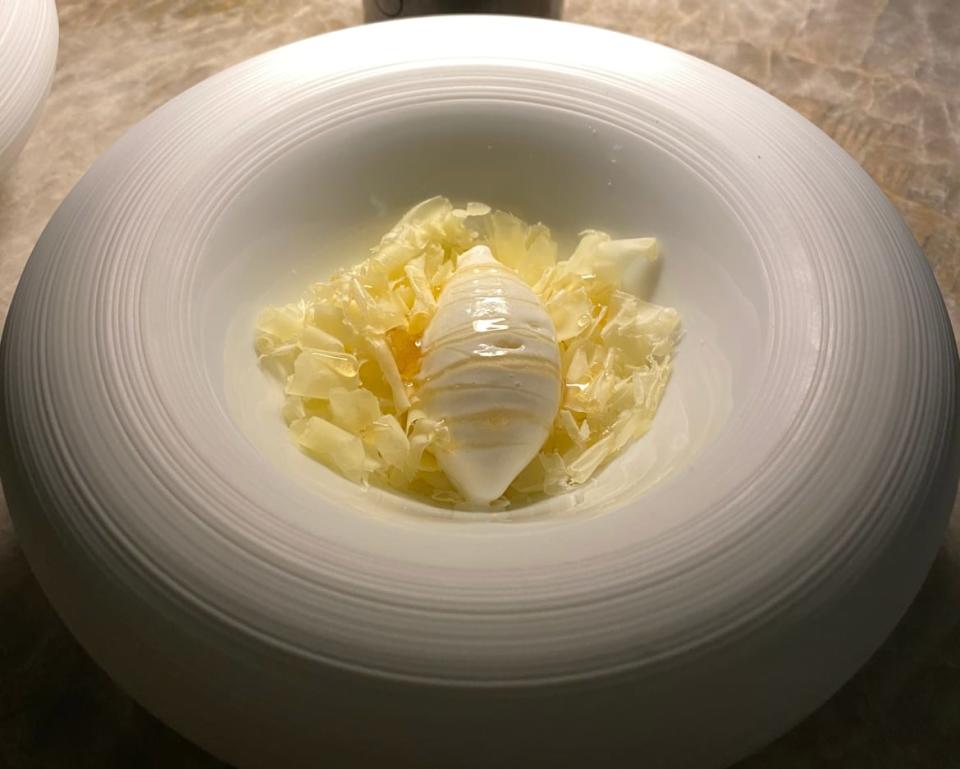
The following morning it was time to head home, which meant back to Orly Airport and on board La Compagnie for the special menu created by chef Franco Sampogna. Lanky and handsome, the Brazilian Sampogna co-founded Frevo in New York City. It’s a 16-seat counter reached through an art gallery on W 8th Street. Frevo may have a Michelin star as of last year but it’s one of the more relaxed fine dining experiences you’ll ever have. As course after course is served and wine from the most obscure of appellations is poured, there, just feet in front of you are Sampogna and his team cheerfully whipping up the next course. If you’re lucky, the restaurant’s signature dessert will still be on the menu—honey ice cream drizzled in truffle honey on a bed of shaved 36-month comte. Upon leaving, in the faintly lit corner of the restaurant, I only realized the person handing out coats to patrons leaving was Sampogna himself.
On board an airplane, one is much more limited both in terms of the obstacles around preparation (dishes that can be served cool hold their quality best) and in terms of taste (food generally tastes more bland, so you have to up the salt). The meal that day was, pun intended, a chef’s kiss on which to end a trip in Paris. Smoked salmon on a bulgur wheat salad with sesame, lemon, and trout eggs to start, followed by a blanquette of scallops and cauliflower with a cheese course (goat and Comte, of course), polished off with a caramelized apple tarte tatin.
À bientôt, as they say.
Get the Daily Beast's biggest scoops and scandals delivered right to your inbox. Sign up now.
Stay informed and gain unlimited access to the Daily Beast's unmatched reporting. Subscribe now.

